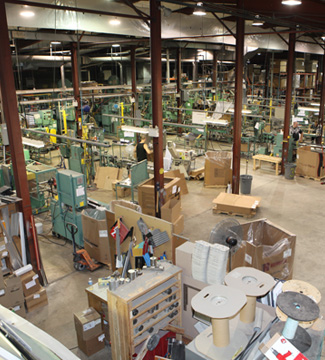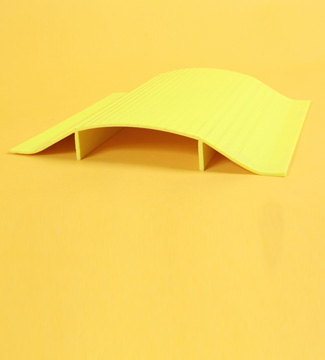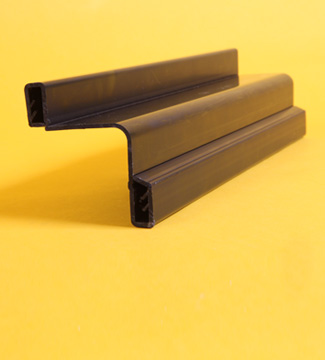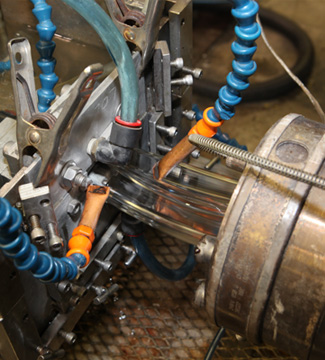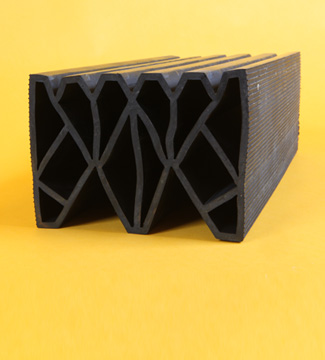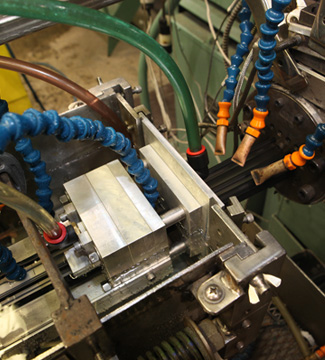| United Plastics Components Launches Video Click here for full article |
Polymers And Compounds Used In Extruded Plastic ProductsListed here is a selection of the extrusion materials frequently used by our customers. To ensure availability of critical materials and to meet timely delivery requirements, UPC maintains its own on-site inventories of many of the most common materials. Follow the links for additional details on each compound:ABS (Acrylonitrile-Butadine-Styrene)This material is a terpolymer of acrylonitrile, butadine and styrene. Typical applications include automotive hardware, appliance cases, pipe and plated items. AcrylicMost acrylics are polymers of methyl methacrylate (PMMA). Acrylic can be optically clear or cloudy. Used in transparent items such as lenses, automotive trim, household items, light fixtures, decorator items signage and point of purchase display. EVA (Ethylene-Vinyl - Acetate)This copolymer resin can be used in adhesives, sealants and coatings. It is found in footwear components, flexible hose, automobile bumpers, toys and athletic goods, moulded automotive parts, flexible packaging and films. Flexible PVC (Poly Vinyl Chloride)Unmodified polyvinylchloride is a very rigid thermoplastic. PVC has excellent resistance to water and aqueous solutions. Applications are for pipe, extruded wire covering, toys, bottles, door and window components, film and fabric coatings. HDPE (High Density Polyethylene)A thermoplastic available in a range of flexibilities formed by a wide variety of thermoplastic processing methods. Useful where moisture resistance and low cost are required. It is used in toys, utensils, films, bottles, pipe and processing equipment. LDPE (Low Density Polyethylene)Vinyl acetate can be copolymerized with ethylene for improved transparency over homopolymerized polyethylene because of a reduction of crystallinity in the copolymer. PC (Polycarbonate)Most commonly formed by a reaction of bispenol A and phosgene. Its applications are almost always those which take advantage of its uniquely high impact strength. PP (Polypropylene)A thermoplastic polymer used in a wide variety of applications, including packaging, textiles (e.g. ropes and carpets) plastic parts and reusable containers of various types, laboratory equipment and automotive components. PU (Polyurethane)Principal applications are in coatings, elastomers and foams. The elastomers have excellent abrasion resistance but high hysteresis. Rigid polyurethane foams have become widely used as insulation materials because of their combination of low heat transfer and good cost effectiveness. Rigid PVC (Poly Vinyl Chloride)Unmodified polyvinylchloride is a very rigid thermoplastic. Usage of PVC has grown steadily since its introduction in the early 1930s to become a very widely used plastic in applications from films and mouldings to extruded pipe. TPE (Thermoplastic elastomers)A family of polymers that can be repeatedly stretched without permanently deforming the shape of the part. Unlike rubber-like elastomers, they do not require curing or vulcanization, as they are true thermoplastics. TPV (Thermal Plastic Vulcanite)Widely known as Santoprene™*, typical applications include weather stripping, seals, glazing boots for window seals, commercial glazing gaskets, expansion joints and gaskets. StyreneTypical applications include thin walled packages, pipe mouldings for construction industry and signage. TPO (Thermal Plastic Olefin)Thermal Plastic Olefin is a Thermoplastic Polyolefin Elastomer plastic material with a medium high melt flow, 650 MPa flexural modulus and low CLTE. *UPC is one of the largest extruders of Santoprene™ in Canada. |
|



